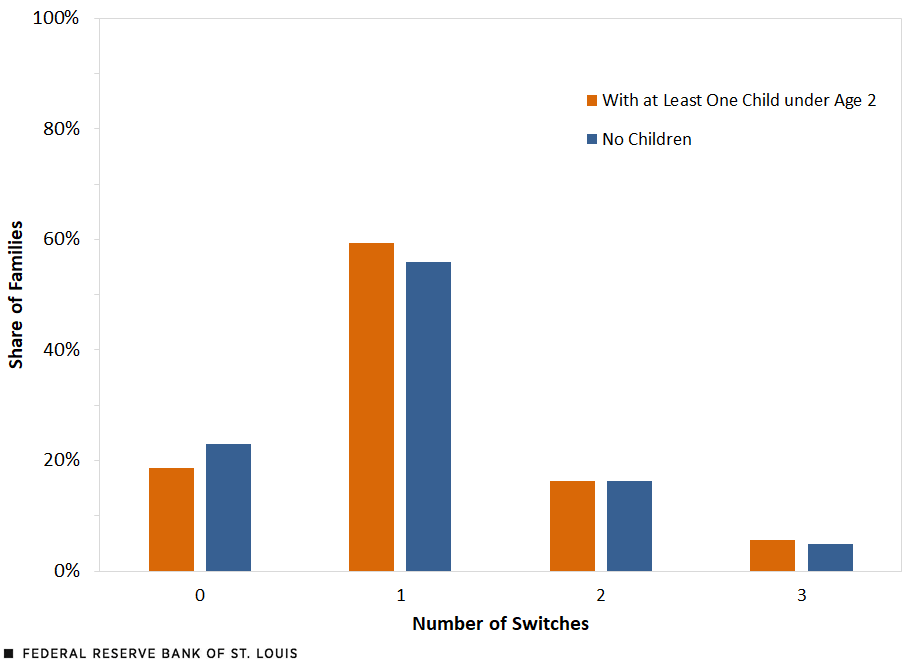OfTheCross
Veteran


Tracking Families That Cross the Income Threshold for Food Stamps
Fluctuating incomes can mean families lose and then regain eligibility for food stamps multiple times during a period of years. Could that help explain why some eligible families don’t apply for the benefit?
Most Families Switch across the Income Threshold
The figure below shows the share of PSID families with each possible number of switches across 130% of the poverty line. Only 18.7% of families with young children remained under the threshold for the entire six-year period we followed them, while 59.4% switched once. Another 21.9% of those families experienced more than one switch across the eligibility threshold.The Number of Times a Family Crossed 130% of the Poverty Line

SOURCES: Panel Study of Income Dynamics and authors’ calculations.
Originally, we expected families with young children to be more likely to have zero switches or two switches (meaning that they were below the eligibility threshold and later fell below it again), remaining below the threshold longer. When a new child enters the family, the mothers often experience more instability in employment and thus family income suffers, i.e., the motherhood penalty. However, there were few differences between families with young children and families with no children when it came to switching across the food stamp threshold. The families with young children had slightly larger probabilities of one or three switches, meaning they were slightly more likely to end up above the threshold.
The Likelihood That a Family Received Food Stamps
Still, being eligible for food stamps doesn’t mean a family will enroll to receive that benefit. The table below shows the relationship between the number of switches and the likelihood that a family received food stamps in the initial period. All families in both samples meet the income requirements for food stamps in the initial period,3 yet only 20% of all families actually received food stamp benefits. Families with children were far more likely to receive food stamps in the first period they were observed across all numbers of switches. Families with no children had lower levels of food stamp recipiency.Probability of Receiving Food Stamps in Initial Period
| Number of Switches across 130% of the Poverty Line | Families with at Least One Child under Age 2 | Families with No Children |
|---|---|---|
| 0 | 53% | 29% |
| 1 | 22% | 6% |
| 2 | 41% | 11% |
| 3 | 31% | 12% |
| SOURCES: Panel Study of Income Dynamics and authors’ calculations. | � |